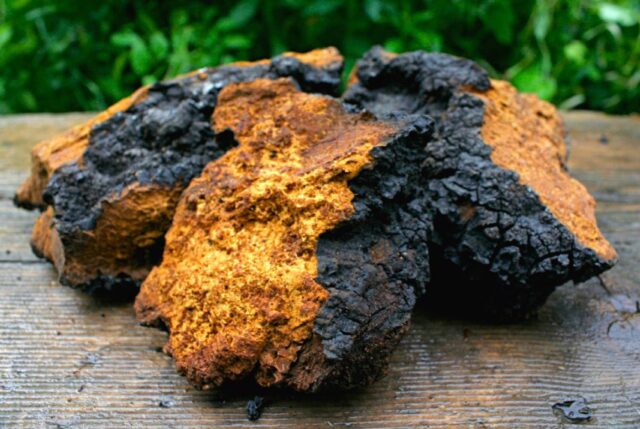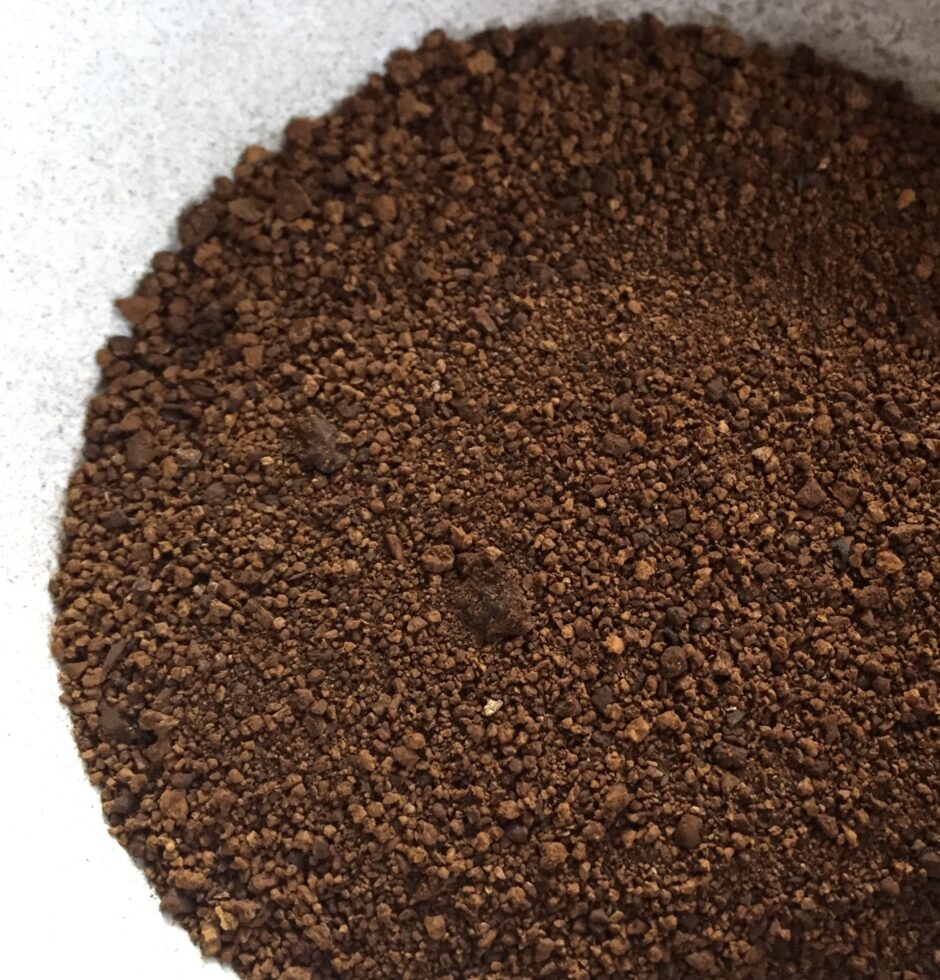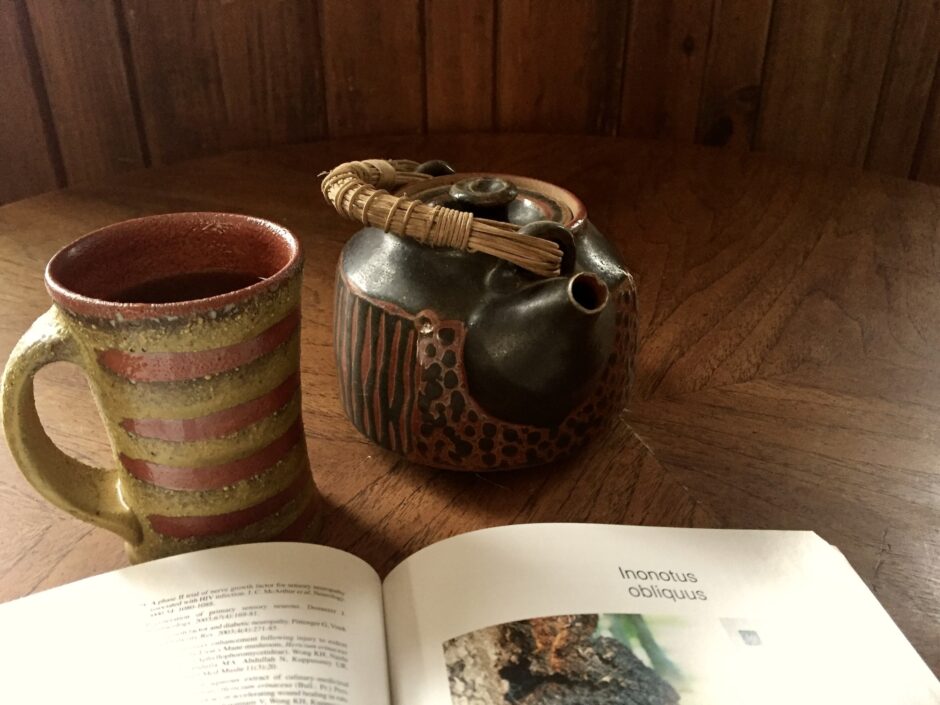 Natalie with baby Hazel in her belly and a birch tree with a voluptuous chaga sclerotium emerging from its trunk.
Natalie with baby Hazel in her belly and a birch tree with a voluptuous chaga sclerotium emerging from its trunk.
Have you met chaga (Inonotus obliquus)? It’s a medicinal “mushroom,” although technically the part that we use is not a true mushroom. Chaga tea has been used for health maintenance and healing for millennia. It’s an amazing wild medicine that grows on certain kinds of birch trees, and happens to also have a pleasant taste. We love putting chaga into spiced winter “chai” tea blends. Check out our chaga tea recipe below, plus a bit more about this fungal ally.
Where and how does chaga grow?
Chaga grows in the boreal region of the Norther Hemisphere. It’s widely found and used in Russia, particularly in Sibera, which is where the name chaga comes from. We haven’t found much of the fungus right around Asheville, but as close as West Virginia it grows abundantly.
Chaga is technically a parasite, mostly on birch trees, but also on alder, elm, oak, poplar, and spruce. The part we harvest looks like a burn scar or burl bursting out of the bark of its host tree, usually along their trunks. Even though its action is parasitic, chaga doesn’t usually kill or substantially harm the trees it grows on. In fact, it’s possible that there is a symbiotic relationship between the fungus and its host, but we humans haven’t figured that out yet.
If Chaga isn’t technically a mushroom, What is it?


The part of chaga that we harvest is a fungal storage organ called a sclerotium, also known as a “canker.” Simply put, a sclerotium is to a fungus like a potato tuber is to a potato plant. Both are organs where the the organism can store energy for later use. In the case of chaga, the sclerotium is a crusty black mass that looks like a burn scar or burl. Chaga appears black because it’s incredibly high in melanin, the same compound that makes human skin darken in the sun.
Medicinal properties of chaga
Chaga’s medicinal uses include the treatment and prevention of cancer, general immune support, digestive disorders, skin disorders, and as an antiviral. It is fabled that in some traditional cultures in Russia, a chaga tea was used to bathe newborn babies. Learn more about chaga’s medicinal uses here.
Like many other medicinal fungi, chaga is rich in both polysaccharides and triterpenoids. Additionally, it’s extremely high in antioxidants. Of note, chaga contains something called betulinic acid, which is unique to this fungus and is currently being studied for its ability to kill human cancer cells.
Chaga tea recipe
The flavor of chaga is mild, rich, and not at all bitter like reishi, another widely known anti-cancer mushroom medicine. Dried, ground chaga powder can easily be added to many herbal teas, coffee, and even to soup stock. Our favorite way to take it is in this yummy, warming winter spiced tea.
Note: prolonged high heat can destroy some of the medicinal compounds found in chaga, so it’s best to pour hot water over it and let it steep, rather than simmering the sclerotium.
- 1 Tbsp cardamom (decorticated black seeds, not the whole green pods)
- 3 Tbsp cinnamon chips (either use chips or chop up cinnamon sticks; powdered cinnamon will cause the tea to become gooey and mucilaginous)
- 1/4 tsp black peppercorns
- 2 Tbsp coriander seeds
- 7 cloves
- 1 thumb-sized piece of fresh ginger, chopped
- 1 Tbsp dried burdock root (or 3 Tbsp fresh, chopped)
- 1 Tbsp dried dandelion root (or 3 Tbsps fresh, chopped) Note: if you choose to use roasted dandelion root, reduce the amount by half
- 1 Tbsp Chaga, chopped or crushed into small crumbles, or powdered
- 1-5 dried Reishi slices, chopped (optional, reishi has a strong, bitter flavor not enjoyed by everyone)
Simmer all ingredients except the chaga in 1/2 gallon of water for 2-4 hours. Then, add chaga at the end, remove from heat and let steep (covered) for 20-30 minutes). Strain and add milk and/or honey if desired.
Our favorite books about chaga and other medicinal fungi
Medicinal Mushrooms: A Clinical Guide
Medicinal Mushrooms: An Exploration of Tradition, Healing, and Culture
By Christopher Hobbs, L.Ac.







